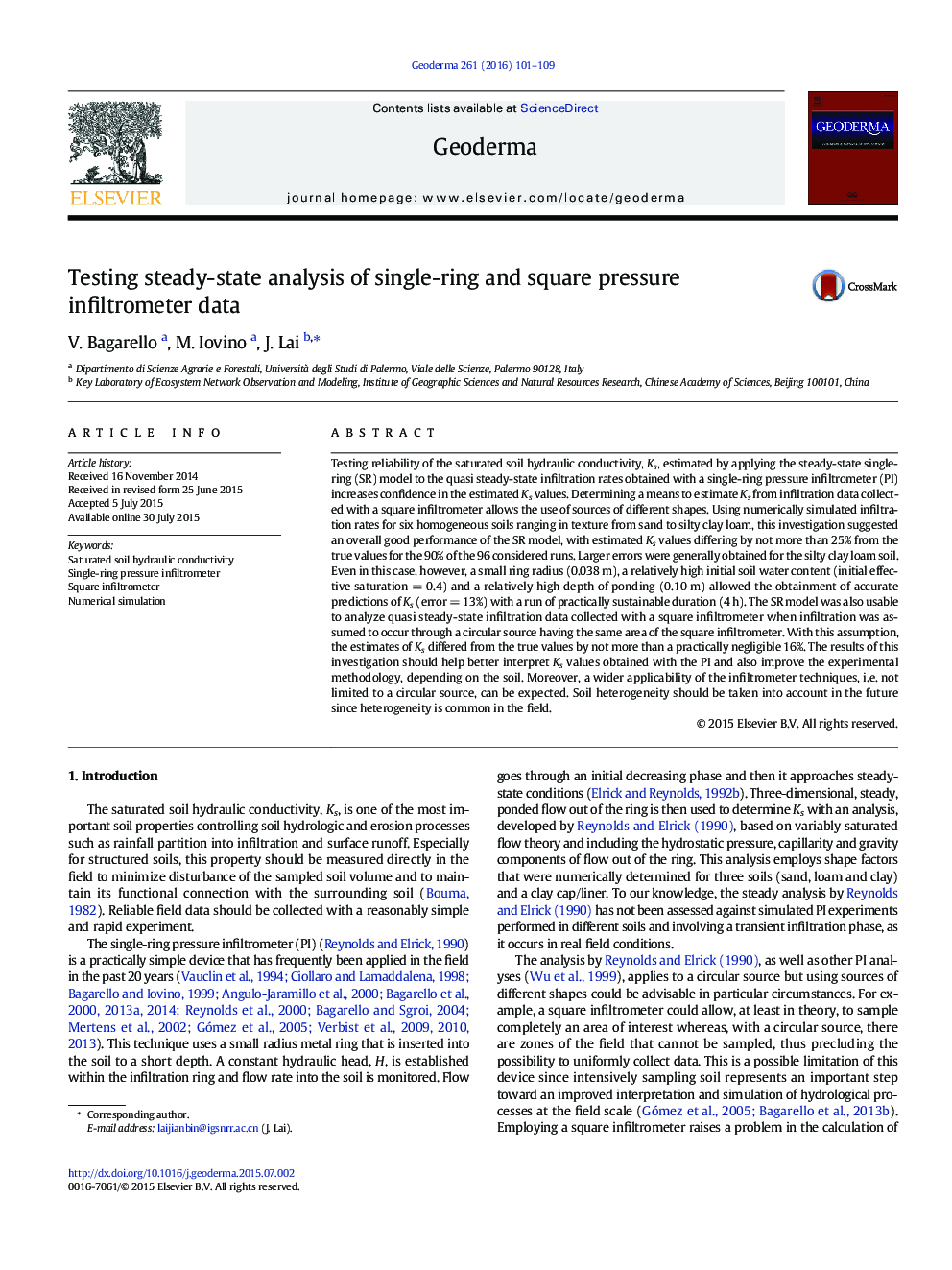| Article ID | Journal | Published Year | Pages | File Type |
|---|---|---|---|---|
| 6408402 | Geoderma | 2016 | 9 Pages |
â¢Saturated soil hydraulic conductivity, Ks, given by the single ring model was checked.â¢A means to estimate Ks from square infiltrometer was developed.â¢Numerically simulated data for six homogeneous soils were used.â¢Accurate predictions of Ks (error â¤Â 25%) were generally obtained.â¢The single ring model was usable to analyze data from a square infiltrometer.
Testing reliability of the saturated soil hydraulic conductivity, Ks, estimated by applying the steady-state single-ring (SR) model to the quasi steady-state infiltration rates obtained with a single-ring pressure infiltrometer (PI) increases confidence in the estimated Ks values. Determining a means to estimate Ks from infiltration data collected with a square infiltrometer allows the use of sources of different shapes. Using numerically simulated infiltration rates for six homogeneous soils ranging in texture from sand to silty clay loam, this investigation suggested an overall good performance of the SR model, with estimated Ks values differing by not more than 25% from the true values for the 90% of the 96 considered runs. Larger errors were generally obtained for the silty clay loam soil. Even in this case, however, a small ring radius (0.038 m), a relatively high initial soil water content (initial effective saturation = 0.4) and a relatively high depth of ponding (0.10 m) allowed the obtainment of accurate predictions of Ks (error = 13%) with a run of practically sustainable duration (4 h). The SR model was also usable to analyze quasi steady-state infiltration data collected with a square infiltrometer when infiltration was assumed to occur through a circular source having the same area of the square infiltrometer. With this assumption, the estimates of Ks differed from the true values by not more than a practically negligible 16%. The results of this investigation should help better interpret Ks values obtained with the PI and also improve the experimental methodology, depending on the soil. Moreover, a wider applicability of the infiltrometer techniques, i.e. not limited to a circular source, can be expected. Soil heterogeneity should be taken into account in the future since heterogeneity is common in the field.
